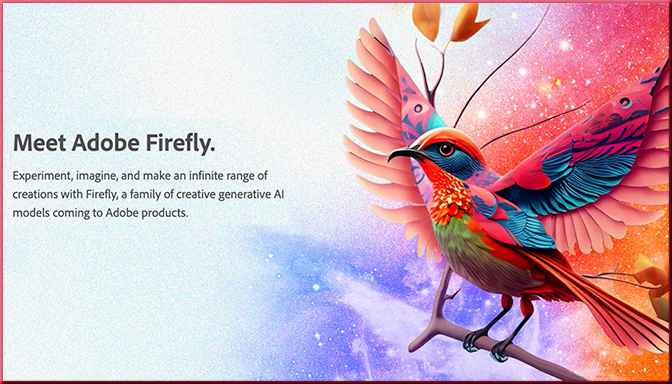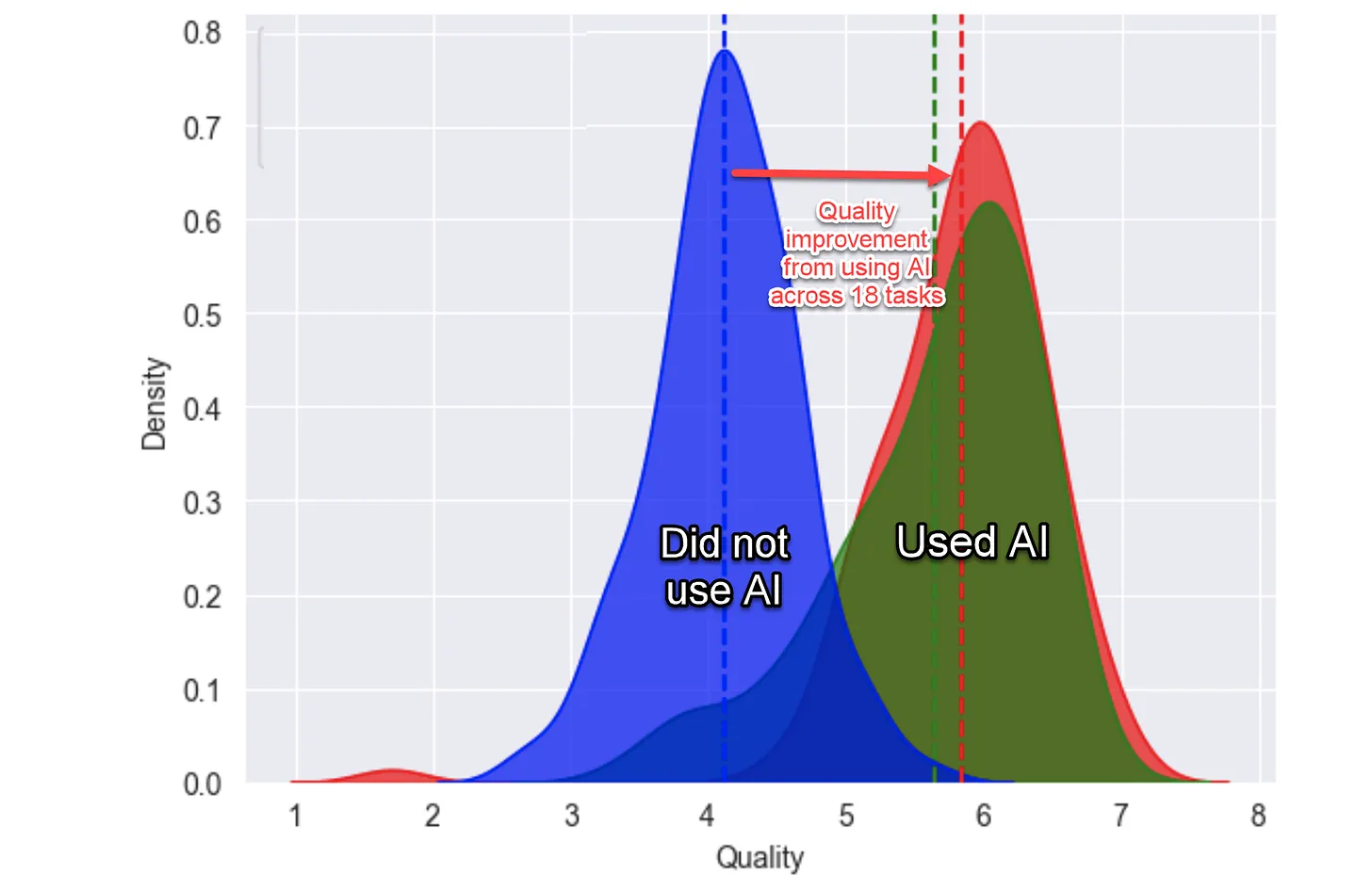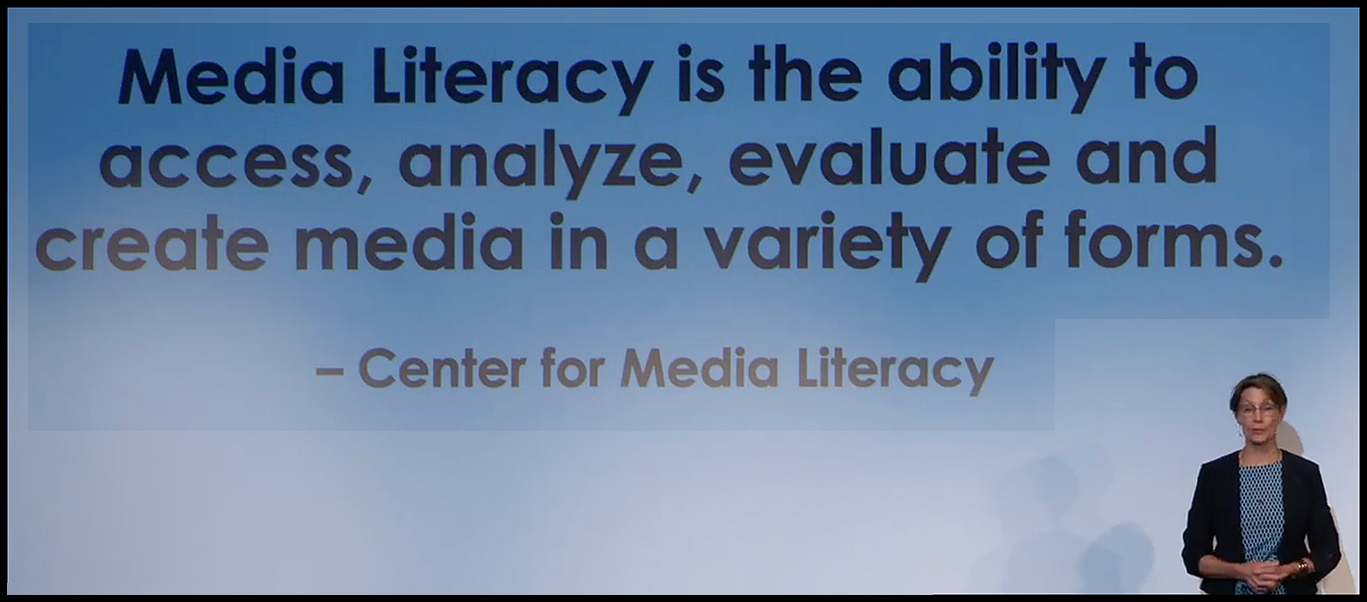From DSC:
Interesting fodder for thought, for sure. Thanks Stefan.
Preparing Students for the AI-Enhanced Workforce — from insidehighered.com by Ray Schroeder
Our graduating and certificate-completing students need documented generative AI skills, and they need them now.
The common adage repeated again and again is that AI will not take your job; a person with AI skills will replace you. The learners we are teaching this fall who will be entering, re-entering or seeking advancement in the workforce at the end of the year or in the spring must become demonstrably skilled in using generative AI. The vast majority of white-collar jobs will demand the efficiencies and flexibilities defined by generative AI now and in the future. As higher education institutions, we will be called upon to document and validate generative AI skills.
AI image generators: 10 tools, 10 classroom uses — from ditchthattextbook.com by Matt Miller
A Majority of New Teachers Aren’t Prepared to Teach With Technology. What’s the Fix? — from edweek.org by Alyson Klein
Think all incoming teachers have a natural facility with technology just because most are digital natives? Think again.
Teacher preparation programs have a long way to go in preparing prospective educators to teach with technology, according to a report released September 12 by the International Society for Technology in Education, a nonprofit.
In fact, more than half of incoming teachers—56 percent—lack confidence in using learning technology prior to entering the classroom, according to survey data included with the report.
5 Actual Use Cases of AI in Education: Newsletter #68 — from transcend.substack.com by Alberto Arenaza
What areas has AI truly impacted educators, learners & workers?
- AI Copilot for educators, managers and leaders
- Flipped
ClassroomsChatbots - AI to assess complex answers
- AI as a language learning tool
- AI to brainstorm ideas
AI-Powered Higher Ed — from drphilippahardman.substack.com by Dr. Philippa Hardman
What a House of Commons round table discussion tells us about how AI will impact the purpose of higher education
In this week’s blog post I’ll summarise the discussion and share what we agreed would be the most likely new model of assessment in HE in the post-AI world.
But this in turn raises a bigger question: why do people go to university, and what is the role of higher education in the twenty first century? Is it to create the workforce of the future? Or an institution for developing deep and original domain expertise? Can and should it be both?
How To Develop Computational Thinkers — from iste.org by Jorge Valenzuela
In my previous position with Richmond Public Schools, we chose to dive in with computational thinking, programming and coding, in that order. I recommend building computational thinking (CT) competency first by helping students recognize and apply the four elements of CT to familiar problems/situations. Computational thinking should come first because it’s the highest order of problem-solving, is a cross-curricular skill and is understandable to both machines and humans. Here are the four components of CT and how to help students understand them.
Are your students prepared for active learning? You can help them! — from The Educationalist at educationalist.substack.com by Alexandra Mihai
- Formulating own learning goals and following through with independent study. While in traditional teaching the learning goals are given to students, in PBL (or at least in some of its purest variants), they need to come up with their own, for each problem they are solving. This requires understanding the problem well but also a certain frame of mind where one can assess what is necessary to solve it and make a plan of how to go about it (independently and as a group). All these seemingly easy steps are often new to students and something they intrinsically expect from us as educators.
From DSC:
The above excerpt re: formulating one’s own learning goals reminded me of project management and learning how to be a project manager.
- Where do I start?
- How do I even organize this project?
- What is the list of to-do’s?
- Who will I need to work with?
Luckily I had a mentor/guide who helped me get going and an excellent contact with the vendor who educated me and helped me get the ball rolling.
I’ll end with another quote and a brief comment:
Not being afraid of mistakes and learning from them.
The education system, at all stages, still penalises mistakes, often with long term consequences. So it’s no wonder students are afraid of making mistakes…
How true.
AI Can Teach Students a Powerful Lesson About the Truth — from edweek.org by Rachna Nath
How I’m harnessing ChatGPT in the classroom
What we teachers desperately need, though, is an ocean of examples and training. We need to see and share examples of generative AI—any type of artificial intelligence that can be used to create new text, images, video, audio, code, or data—being used across the curriculum. We need catalogs of new lesson plans and new curriculum.
And we need training on theoretical and practical levels: training to understand what artificial intelligence actually is and where it stands in the development timeline and training about how to integrate it into our classes.
From DSC:
Interesting.
Learners can now seamlessly transition between AI-powered assistance (AI Tutor) and Live Expert support to get access to instant support, whether through AI-guided learning or real-time interactions with a human expert.
From Brainly Enrolls New AI-Powered Tools for More
Personalized and Accessible Learning (businesswire.com)
ASSIGNMENT MAKEOVERS IN THE AI AGE WITH DEREK BRUFF — from teachinginhighered.com by Bonni Stachowiak
Derek Bruff shares about assignment makeovers in the AI age on episode 481 of the Teaching in Higher Ed podcast
Comment on this per Derek Bruff:
Why not ask ChatGPT to write what King or X would say about a current debate and then have the students critique the ChatGPT output? That would meet the same learning goals while also teaching AI literacy.
(Be sure to read Asim’s contribution for a useful take.)
Generative AI in Schools: A Closer Look and Future Predictions — from thejournal.com by Ted Mo Chen (emphasis DSC)
Here’s a closer look at the concurrent AI landscape in schools — and a prediction of what the future holds.
So far, high-profile ventures in the instruction realm, such as Kyron Learning, have fused teacher-produced, recorded content with LLM-powered conversational UX. The micro-learning tool Nolej references internet material when generating tasks and tests, but always holds the language model closely to the ground truth provided by teachers. Both are intriguing takes on re-imagining how to deliver core instruction and avoid hallucinations (generated content that is nonsensical).
Also see this posting on LinkedIn about that article, where Ted Mo Chen mentions the following companies:
Companies to watch:
- MagicSchool AI // Adeel Khan
- TeachFX // Jamie Poskin
- SchoolJoy // Ian Z.
- Flint // Sohan Choudhury
- EXAMIND AI
- Notion AI
- Amira Learning // Mark Angel
- Kyron Learning // Rajen Sheth
- NOLEJ // Bodo Hoenen
- Oko Labs // Matt Miller
- GSV Ventures // Claire Zau
New report: Trends in Learning 2023 — from open.ac.uk by Professor Agnes Kukulska-Hulme
So, what six trends have we chosen for this year’s report? They are: advances in AI, the metaverse and learning, challenge-based learning, entrepreneurial learning, seeing yourself in the curriculum and multimodal learning. In the report, we discuss each of the trends in turn, why we think they are important and the impact they are already having or will have on workplace learning. We have also interviewed six people, experts in their field, to find out their opinions and experiences of the trends, sharing their insights in the report.
Unity executive shares her thoughts on the future of education and technology with the rise in popularity of A.I. and real-time 3D content — from fortune.com by Preston Fore
As a result, real-time 3D jobs are among the most in demand within the tech industry. According to Unity’s vice president of Education and Social Impact, Jessica Lindl, demand is 50% higher than traditional IT jobs—adding that salaries for real-time 3D jobs are 60% greater.
“We want to provide really simple on ramps and pathways that will lead you into entry level jobs so that at any point in your career, you can decide to transfer into the industry,” Lindl says.
How universities worldwide are responding to generative AI — from linkedin.com by University World News
University World News continues its exploration of generative AI in our new special report on ‘AI and Higher Education’. In commentaries and features, academics and our journalists around the world investigate issues and developments around AI that are impacting on universities. Generative AI tools are challenging and changing higher education systems and institutions — how they are run as well as ways of teaching and learning and conducting research.
We’ve collated the lead articles below for you to read and the full report is available here.
What’s the future of generative AI? An early view in 15 charts — from mckinsey.com
Generative AI has hit the ground running—so fast that it can feel hard to keep up. Here’s a quick take pulled from our top articles and reports on the subject.
Teaching in the Age of AI — from cft.vanderbilt.edu by Michael Coley, Stacey M. Johnson, Paige Snay, Joe Bandy, John Bradley, and Ole Molvig
This guide will explore:
- What is generative AI, and where can it be found?
- How can I harness generative AI tools in my teaching to improve student learning?
- How can I craft assignments that deter unauthorized use of generative AI?
- How does academic integrity relate to generative AI tools?
- What resources are there for instructors who want to engage with generative AI tools?
15 Inspirational Voices in the Space Between AI and Education — from jeppestricker.substack.com by Jeppe Klitgaard Stricker
Get Inspired for AI and The Future of Education.
My advice for you today is this: fill your LinkedIn-feed and/or inbox with ideas, inspirational writing and commentary on AI.
This will get you up to speed quickly and is a great way to stay informed on the newest movements you need to be aware of.
My personal recommendation for you is to check out these bright people who are all very active on LinkedIn and/or have a newsletter worth paying attention to.
I have kept the list fairly short – only 15 people – in order to make it as easy as possible for you to begin exploring.
It is crucial to recognize that the intrinsic value of higher education isn’t purely in its ability to adapt to market fluctuations or technological innovations. Its core strength lies in promoting critical thinking, nurturing creativity, and instilling a sense of purpose and belonging. As AI progresses, these traits will likely become even more crucial. The question then becomes if higher education institutions as we know them today are the ony ones, or indeed the best ones, equipped to convey those core strengths to students.
Higher education clearly finds itself caught in a whirlwind of transformation, both in its essence and execution. The juxtaposition of legacy structures and the evolving technological landscape paints a complex picture.
For institutional leaders, the dual challenge lies in proactively seeking and initiating change (not merely adapting to it) without losing sight of their foundational principles. Simultaneously, they must equip students with skills and perspectives that AI cannot replicate.
— from Is Higher Education Nearing the Tipping Point?
by Jeppe Klitgaard Stricker
EdTech Companies Are Racing to Build a Github Copilot for Teachers. This Will Not Be Easy. — from danmeyer.substack.com by Dan Meyer; via Matthew Tower
Generative AI has produced an extremely useful tool for software developers. Can it do the same for teachers?
Also, Matthew Tower, pulled this quote from The big problem with grades. / via Washington Post
“They begged, bargained with, and berated their instructor in pursuit of better grades — not “because they like points,” but rather, “because the education system has told them that these points are the currency with which they can buy a successful future.””
From DSC:
Time will tell.
Per Jeff Maggioncalda, Coursera CEO: “This system-wide industry micro-credential program sets an innovative blueprint for the future of higher education.”
***
University Of Texas, Coursera Launch Historic Micro-credential Partnership — from forbes.com by Michael T. Nietzel
The University of Texas and Coursera, the online learning platform and a pioneer of Massive Open Online Courses (MOOCS), are launching a large-scale, industry-recognized micro-credential program. The collaboration was announced today in a blogpost by Coursera.
Through the new partnership, every student, faculty, and staff (and even alumni) across all nine universities in the University of Texas (UT) System will gain access to Courser’s Career Academy for no additional cost to them.
The economic potential of generative AI — from mckinsey.com; via Superhuman
.
DC: It should prove to be interesting & fun to watch how #AI and #XR related technologies will be integrated into games & the #gamification of #learning .https://t.co/HO2CftqNrs via @VRScout
— Daniel Christian (he/him/his) (@dchristian5) June 23, 2023
.
On giving AI eyes and ears — from oneusefulthing.org by Ethan Mollick
AI can listen and see, with bigger implications than we might realize.
Excerpt:
But even this is just the beginning, and new modes of using AI are appearing, which further increases their capabilities. I want to show you some examples of this emerging world, which I think will soon introduce a new wave of AI use cases, and accompanying disruption.
We need to recognize that these capabilities will continue to grow, and AI will be able to play a more active role in the real world by observing and listening. The implications are likely to be profound, and we should start thinking through both the huge benefits and major concerns today.
Ethan Mollick
5 Steps to Transforming Images into Videos Using AI Tools — from heatherbcooper.substack.com by Heather Cooper
A simple guide to layering AI tools for quick video creation
.
‘Nobody wins in an academic-integrity arms race’ — from chonicle.com by Ian Wilhelm
How artificial intelligence is changing the way college thing about cheating
Even though generative AI is a new thing, it doesn’t change why students cheat. They’ve always cheated for the same reason: They don’t find the work meaningful, and they don’t think they can achieve it to their satisfaction. So we need to design assessments that students find meaning in.
Tricia Bertram Gallant
Caught off guard by AI — from chonicle.com by Beth McMurtrie and Beckie Supiano
Professor scrambled to react to ChatGPT this spring — and started planning for the fall
Excerpt:
Is it cheating to use AI to brainstorm, or should that distinction be reserved for writing that you pretend is yours? Should AI be banned from the classroom, or is that irresponsible, given how quickly it is seeping into everyday life? Should a student caught cheating with AI be punished because they passed work off as their own, or given a second chance, especially if different professors have different rules and students aren’t always sure what use is appropriate?
GPT-4 Can Use Tools Now—That’s a Big Deal — from every.to by Dan Shipper; resource via Sam DeBrule
What “function calling” is, how it works, and what it means
Excerpt:
…OpenAI built tool use right into the GPT API with an update called function calling. It’s a little like a child’s ability to ask their parents to help them with a task that they know they can’t do on their own. Except in this case, instead of parents, GPT can call out to external code, databases, or other APIs when it needs to.
Each function in function calling represents a tool that a GPT model can use when necessary, and GPT gets to decide which ones it wants to use and when. This instantly upgrades GPT capabilities—not because it can now do every task perfectly—but because it now knows how to ask for what it wants and get it.
.
.
How ChatGPT can help disrupt assessment overload — from timeshighereducation.com by David Carless
Advances in AI are not necessarily the enemy – in fact, they should prompt long overdue consideration of assessment types and frequency, says David Carless
Excerpt:
Reducing the assessment burden could support trust in students as individuals wanting to produce worthwhile, original work. Indeed, students can be co-opted as partners in designing their own assessment tasks, so they can produce something meaningful to them.
A strategic reduction in quantity of assessment would also facilitate a refocusing of assessment priorities on deep understanding more than just performance and carries potential to enhance feedback processes.
If we were to tackle assessment overload in these ways, it opens up various possibilities. Most significantly there is potential to revitalise feedback so that it becomes a core part of a learning cycle rather than an adjunct at its end. End-of-semester, product-oriented feedback, which comes after grades have already been awarded, fails to encourage the iterative loops and spirals typical of productive learning.
.
.
The full 12 uses are here: https://edgeoflearning.com/your-new-teaching-superpower-ai-tools/
The AI Tools in Education Database — from kiwi-path-612.notion.site by EdTech Insiders
Excerpt (emphasis DSC):
Since AI in education has been moving at the speed of light, we built this AI Tools in Education database to keep track of the most recent AI tools in education and the changes that are happening every day. This database is intended to be a community resource for educators, researchers, students, and other edtech specialists looking to stay up to date. This is a living document, so be sure to come back for regular updates.
.
.
Time for Class 2023 Study finds students are earlier adopters of generative AI tools than faculty, and majority (69%) of learners prefer hybrid, blended or online course formats — from globenewswire.com by Tyton Partners
.
AI Could Prevent Hiring Bias — Unless It Makes It Worse — from nerdwallet.com by Anna Helhoski
Advocates say AI can eliminate human biases in hiring. Skeptics point out that AI tools are trained by … humans.
Excerpt:
These claims conjure up the rosiest of images: human resource departments and their robot buddies solving discrimination in workplace hiring. It seems plausible, in theory, that AI could root out unconscious bias, but a growing body of research shows the opposite may be more likely.
…
Companies’ use of AI didn’t come out of nowhere: For example, automated applicant tracking systems have been used in hiring for decades. That means if you’ve applied for a job, your resume and cover letter were likely scanned by an automated system. You probably heard from a chatbot at some point in the process. Your interview might have been automatically scheduled and later even assessed by AI.
From DSC:
Here was my reflection on this:
DC: Along these lines, I wonder if Applicant Tracking Systems cause us to become like typecast actors and actresses — only thought of for certain roles. Pigeonholed.
— Daniel Christian (he/him/his) (@dchristian5) June 23, 2023
Also related to AI in hiring, see:
4 in 10 Companies Will Be Using AI Interviews by 2024 — from resumebuilder.com
In June, ResumeBuilder.com surveyed more than 1,000 employees who are involved in hiring processes at their workplaces to find out about their companies’ use of AI interviews.
The results:
- 43% of companies already have or plan to adopt AI interviews by 2024
- Two-thirds of this group believe AI interviews will increase hiring efficiency
- 15% say that AI will be used to make decisions on candidates without any human input
- More than half believe AI will eventually replace human hiring managers
Watch OpenAI CEO Sam Altman on the Future of AI — from bloomberg.com
Sam Altman, CEO & Co-Founder, OpenAI discusses the explosive rise of OpenAI and its products and what an AI-laced future can look like with Bloomberg’s Emily Chang at the Bloomberg Technology Summit.
.
PowerSchool Announces Collaboration with Microsoft Azure OpenAI Service to Provide Personalized Learning at Scale in K-12 Education — from powerschool.com
Large-scale language models integrated within PowerSchool Performance Matters and PowerSchool LearningNav products will empower educators in delivering transformative personalized learning pathways
The implementation of generative AI within these products will dramatically improve educators’ ability to deliver personalized learning to students at scale by enabling the application of personalized assessments and learning pathways based on individual student needs and learning goals. K-12 educators will also benefit from access to OpenAI technology…
.
FETC 2023 Virtual Roundtable: How AI Will Transform K-12 Education
AI could be the great equalizer!
Holly Clark
Example screenshots:

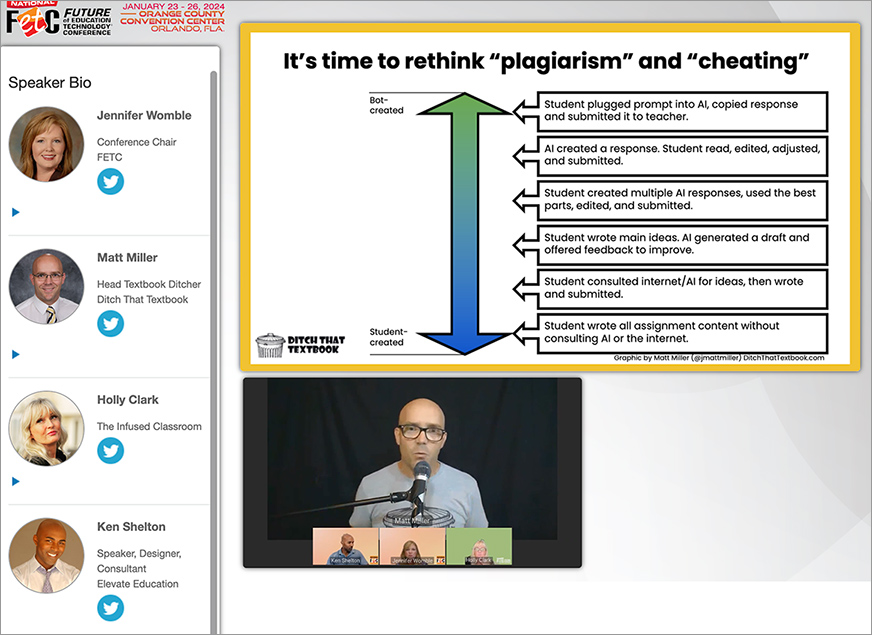
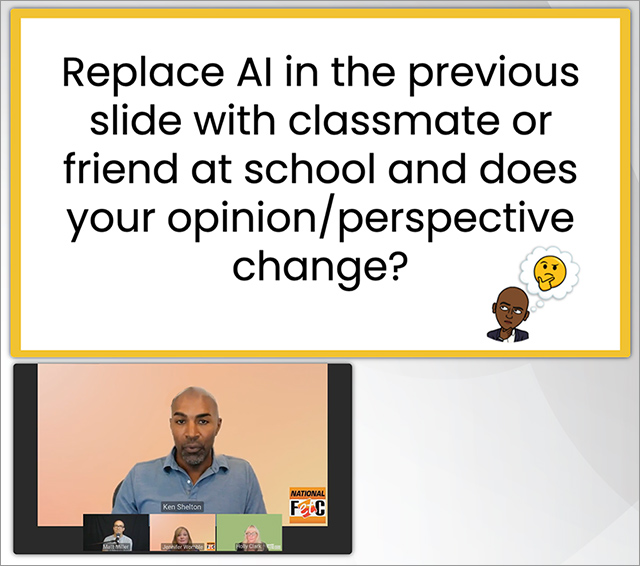









:format(webp)/cdn.vox-cdn.com/uploads/chorus_asset/file/24976021/Canva_Magic_Studio.png)
